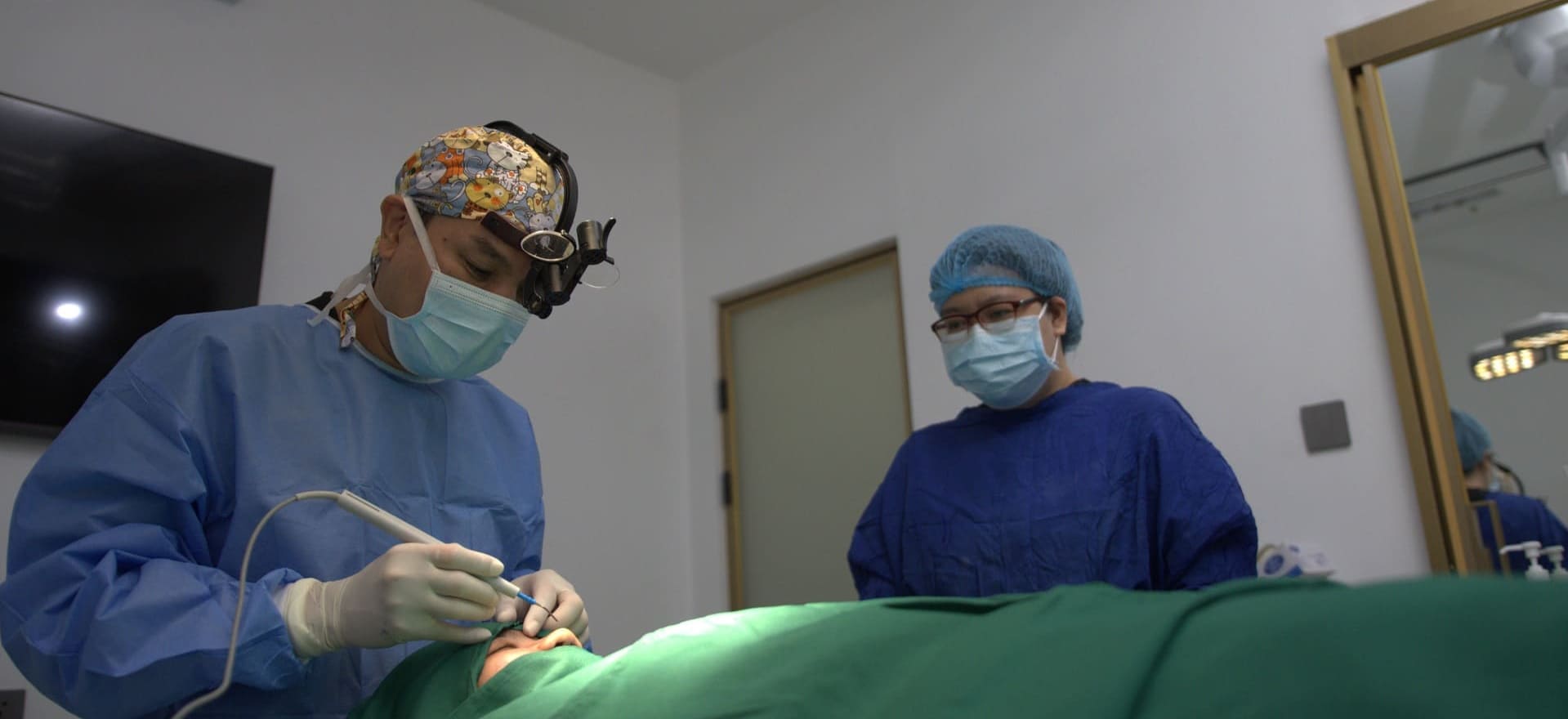
Jaw Contouring
What is Jaw Contouring?
Often referred to as V-line surgery (especially popular in East Asia), this involves:
Shaving or trimming the jawbone (mandible) to narrow or refine a wide or square jaw.
May include chin reshaping (genioplasty) to enhance the overall contour.
Performed under general anesthesia, with incisions usually made inside the mouth to avoid visible scarring.
Goals:
Create a more V-shaped or oval facial outline.
Slim a wide, square, or masculine jawline.
Improve facial symmetry and harmony.
Pre-Procedure Guidelines
Proper preparation before surgery ensures a safer procedure and a smoother recovery.
1. Medical Assessment
Complete all required lab tests, imaging (such as facial X-rays or CT scans), and medical clearance as advised.
Inform the clinic of any existing conditions (e.g., hypertension, diabetes, bleeding disorders, or allergies).
Disclose all medications, vitamins, and supplements you’re taking.
2. Medications & Supplements
Avoid aspirin, ibuprofen, vitamin E, and herbal supplements 7 days before surgery unless approved.
Take your maintenance medications for chronic illnesses unless instructed otherwise.
Notify your surgeon before taking any new over-the-counter medications or supplements.
3. Lifestyle Adjustments
Stop smoking at least 2 weeks before surgery, as it can significantly delay healing and increase the risk of complications.
Avoid alcohol for 48 hours prior to surgery.
Arrange for a trusted adult to accompany you home and stay with you for at least the first 24 hours.
4. Day Before & Day of Surgery
For general anesthesia: No food or water after midnight before surgery.
Shower the night before or morning of surgery. Do not wear makeup, lotion, or jewelry.
Wear comfortable clothes with a front opening (zipper or buttons).
Post Procedure Guidelines
Following these instructions will help minimize risks and support optimal healing.
1. Swelling, Bruising & Sensation
Expect significant facial swelling and bruising for the first 1–2 weeks. Swelling may persist for several weeks but will gradually subside.
Temporary numbness or tingling along the jaw or lower face is normal due to nerve proximity and typically resolves over time.
2. Activity & Recovery
Light walking is encouraged starting the day of surgery to promote blood circulation.
Avoid strenuous exercise, heavy lifting, or bending over for at least 2 weeks.
Sleep with your head elevated using 2–3 pillows for the first week to help reduce swelling.
3. Wound & Oral Care
If incisions are inside the mouth, rinse gently with prescribed antiseptic mouthwash or saltwater solution after every meal and before bed.
Brush teeth gently with a soft toothbrush to avoid disturbing sutures.
For external incisions, clean gently with distilled water or as instructed by your surgeon, and keep the area dry.
4. Dietary Guidelines
Start with a soft or liquid diet (soups, smoothies, protein shakes) for the first 7–10 days.
Gradually return to a normal diet as tolerated, avoiding hard, chewy, or crunchy foods for 3–4 weeks.
5. Compression Garment
You may be asked to wear a facial compression garment 24 hours a day for the first 5–7 days, and then during waking hours for up to 1 month to minimize swelling and contour the jawline.
6. Medications
Take all prescribed medications (antibiotics, pain relievers, anti-inflammatory drugs) as directed.
Continue your maintenance medications unless instructed otherwise.
Avoid alcohol for at least 48 hours post-op or while taking medication.
7. Smoking & Alcohol
Do not smoke or vape for at least 2 weeks after surgery—this can delay healing and increase complications.
Refrain from alcohol consumption during your recovery, especially when on medications.
8. Signs to Watch For
Contact your surgeon or clinic immediately if you experience:
Sudden or worsening facial swelling
Persistent bleeding or pus-like discharge from incision sites
Fever above 38°C (100.4°F)
Difficulty breathing or swallowing
Severe or increasing pain unrelieved by medications
